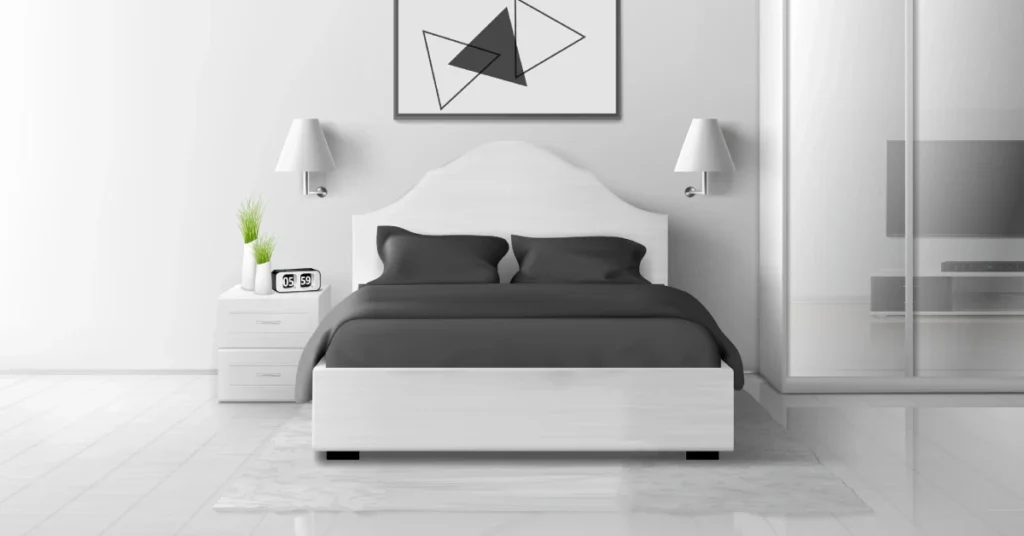Choosing the right mattress size is crucial for both comfort and functionality in your bedroom. Room dimensions play a significant role in this decision, influencing not only how well you sleep but also how the mattress fits your space. Accurately measuring your room and understanding mattress sizes are key steps in finding the perfect fit for your sleeping needs.
Mattress sizes range from compact twin options to spacious king-sized beds, each designed to suit different room layouts and personal preferences. A twin mattress, measuring 38 inches wide by 75 inches long, works well in smaller spaces like children’s rooms or guest bedrooms. For couples seeking more room, a queen-size mattress at 60 inches wide by 80 inches long offers a balance of comfort and space efficiency.
When you shop beds on sale today, consider factors beyond just the bed size. Think about how the mattress will fit within your room, allowing for adequate space to move around and accommodate other furniture. This approach ensures a harmonious bedroom layout that promotes relaxation and restful sleep.
Key Takeaways
- Measure your room carefully to determine the ideal mattress size
- Consider both comfort and available space when choosing a mattress
- Balance the mattress size with other furniture needs for optimal bedroom layout
Understanding Mattress Sizes and Room Dimensions
Selecting the right mattress size requires careful consideration of your room dimensions and personal needs. Standard mattress sizes vary in width and length, impacting how they fit within different bedroom layouts.
The Importance of Room Size in Mattress Selection
Room size plays a crucial role in choosing the ideal mattress. A spacious bedroom can accommodate larger mattresses, while smaller rooms may require more compact options. Consider traffic flow and the placement of other furniture when deciding on mattress size.
For optimal comfort, leave at least 60 cm of space on three sides of the bed. This allows easy movement and bed-making. In master bedrooms, a queen or king-size mattress often works well, provided there’s enough room for nightstands and dressers.
Smaller guest rooms or children’s bedrooms might be better suited to twin or full-size mattresses. These sizes leave more floor space for activities and storage.
Standard Mattress Sizes and Their Dimensions
Common mattress sizes in Canada include:
- Twin: 96.5 cm x 188 cm
- Twin XL: 96.5 cm x 203 cm
- Full: 134.5 cm x 188 cm
- Queen: 152.5 cm x 203 cm
- King: 193 cm x 203 cm
- California King: 183 cm x 213 cm
Twin and twin XL mattresses are ideal for single sleepers or children’s rooms. Full mattresses suit single adults or couples who don’t mind close quarters. Queen mattresses are popular for couples, offering a balance of space and room fit.
King and California king mattresses provide ample space for couples who prefer more room to stretch out. These larger sizes work best in spacious master bedrooms.
How to Measure Your Room for the Perfect Mattress Fit
Accurate room measurements are essential for choosing the right mattress size. Start by measuring the length and width of your bedroom using a tape measure. Note down these dimensions in centimetres.
Next, measure any alcoves or protruding architectural features that might affect bed placement. Account for the space needed for doors to swing open and drawers to pull out.
Create a simple floor plan on graph paper, marking windows, doors, and existing furniture. This visual aid helps you experiment with different mattress sizes and room layouts.
Remember to measure staircases, hallways, and doorways to ensure your chosen mattress can be easily delivered to your bedroom. Some larger mattresses may require special delivery considerations.
Choosing the Right Mattress for Your Needs
Selecting the ideal mattress involves considering sleep quality, personal habits, and lifestyle requirements. The right choice can significantly impact your rest and overall well-being.
Considering Sleep Quality and Sleeping Habits
Sleep position plays a crucial role in mattress selection. Side sleepers often benefit from softer mattresses that cushion pressure points. Back sleepers typically need medium-firm support to maintain proper spinal alignment. Stomach sleepers usually require firmer surfaces to prevent lower back strain.
For couples, motion isolation is key. Memory foam and hybrid mattresses excel at reducing movement transfer. Solo sleepers have more flexibility in their choices.
Sleep temperature preferences matter too. Some mattresses, like gel-infused foam, offer cooling properties for those who tend to overheat at night.
Assessing Mattresses for Different Types of Sleepers
Body size and weight influence mattress choice. Heavier individuals may need firmer support to prevent sinking, while lighter persons might prefer softer options for adequate contouring.
Chronic pain sufferers should prioritize pressure relief. Memory foam and latex mattresses often excel in this area.
For those with allergies, hypoallergenic materials like natural latex or certain foams can be beneficial.
Parents considering co-sleeping might opt for larger sizes like king or California king to ensure ample space.
Balancing Comfort, Budget, and Lifestyle Requirements
Mattress type impacts both comfort and cost. Innerspring models are often budget-friendly but may lack advanced features. Memory foam offers excellent contouring but can be pricier. Hybrid mattresses balance support and comfort, suiting various preferences.
Durability is crucial for long-term value. Higher-quality materials often come with a higher price tag but can offer better longevity.
Consider lifestyle factors like the frequency of moves. Lighter, more compact mattresses might be preferable for those who relocate often.
For guest rooms, versatility is key. A medium-firm queen-size mattress often suits a wide range of sleepers.
Conclusion
Choosing the right mattress size depends on careful consideration of your room dimensions and layout. Accurate measurements are essential to ensure the mattress fits well, enhances sleep quality, and maintains proper room functionality.
By balancing comfort with available space and following measurement guidelines, you can make an informed choice that promotes better sleep and an organized bedroom.
For more helpful tips, visit SayWhatMagazine.

